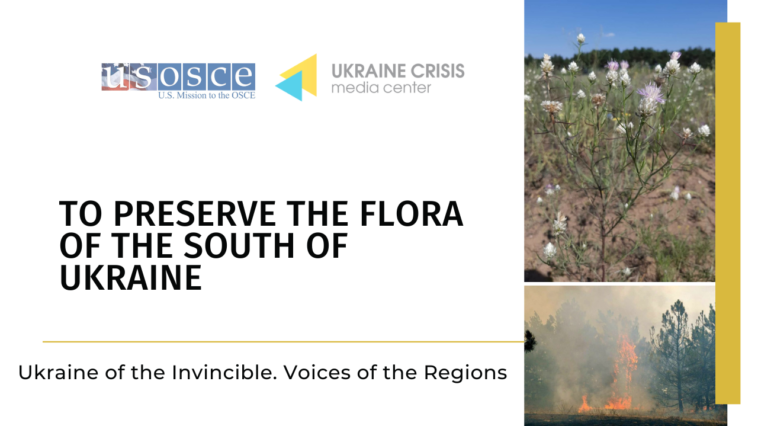During a hearing in the European Parliament’s Committee on Environment, Public Health and Food Safety, the Minister of Ecology of Ukraine Ruslan Strilets said that over the seven months of the all-out war with russia, Ukraine’s ecology sustained one trillion hryvnias of damage.
About a third of the country’s forests have been destroyed or significantly damaged, and 450,000 hectares of forests are under russian occupation. 2.45 million hectares of forests have been liberated, but they are “burnt and trenched” and will take decades to restore.
WWF-Ukraine also provides terrifying data: 20% of Ukrainian conservation areas have been affected by the war, 8 nature reserves and 10 national parks remain under occupation. Destroyed environment and depleted natural resources – this is what the occupied territories look like after liberation.
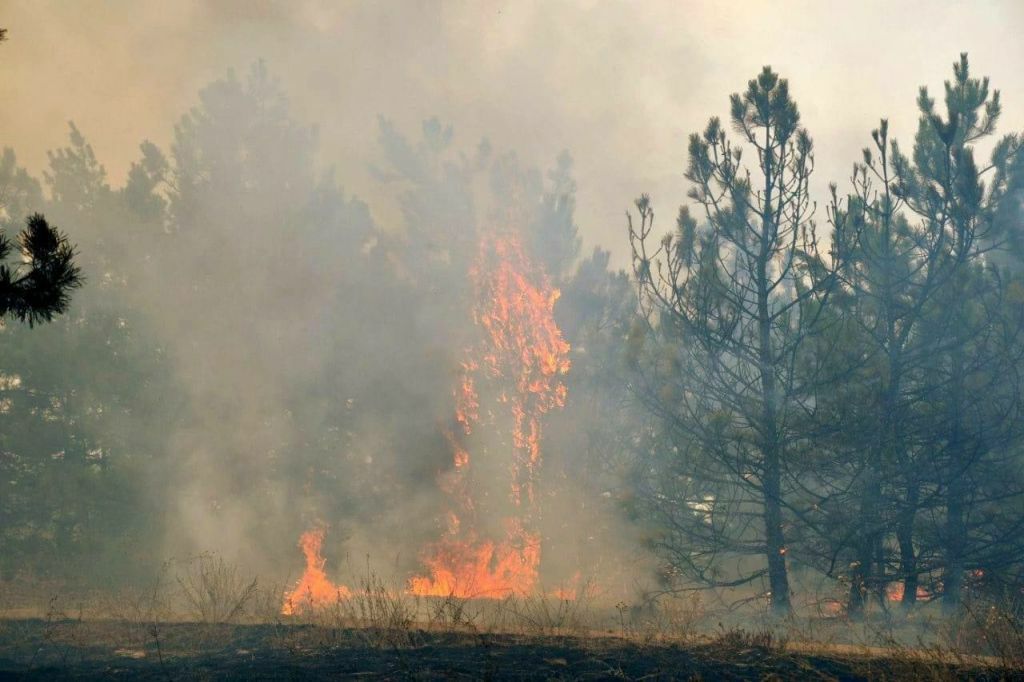
Unique cornflowers of the Northern Black Sea region
Professional botanists of the NGO Ukrainian Nature Conservation Group compiled a list of unique plants that are on the verge of extinction as a result of russia’s full-scale armed aggression in Ukraine. It includes over 20 rare plants from the Red Book of Ukraine.
Rare cornflowers grow on the last patches of sandy steppes of the Mykolayiv region and nowhere else on the planet. These plants are considered narrowly endemic species of the Northern Black Sea region, because they can be found only within this area – in the sandy steppes of the lower reaches of the Southern Bug and Inhul around Mykolayiv.
“To protect cornflowers, scientists suggested creating 5 areas within the Emerald Network. One of them, Nyzhnie Pobuzhzhia, has already been approved by the Standing Committee of the Berne Convention. Another 4 areas are waiting for this decision: Halytsynivski Pisky, Mykolayivske Pobuzhzhia, Voznesenske Pobuzhzhia and Inhul River Valley,” said Viktor Skorobohatov, an expert of the Ukrainian Nature Conservation Group.
Centaurea margaritaalba
It grows in three places close to Mykolayiv: near Kovalivka, Mykhailo-Laryne and Balovne. On August 25, 2022, a large-scale fire broke out in the Andriyiivsky reserve tract, where centaurea margaritaalbagrows. Among artificial pine plantations, there are areas of sandy steppe with rare plant species that died during the fire as well as cornflowers.
“We have been trying for several years to grant this territory a conservation status. Since the beginning of the all-out war, the locality has been constantly at risk due to regular missile attacks. Today, this area of more than 20 hectares is the most preserved centaurea margaritaalba habitat in the world,” said environmentalist Viktor Skorobohatov.
Centaurea margaritacea
Inflorescence of centaurea margaritaceaalso resemble pearls, but of a darker color. This species is listed in the Red Book of Ukraine with the status of “endangered”. Currently, the only place in the world where centaurea margaritaceagrows is the Mishkovo-Pohorilove tract near Mykolayiv. This is a valuable protected area, because among artificial forest plantations there are areas of sandy patches on the meadows.
“Unfortunately, because of the ill-considered state land policy, most of the sandy areas of the protected territory were given to private ownership. Following our appeals, in 2021 the protected lands were returned to state ownership. However, other, most valuable areas that did not have conservation status have already been destroyed,” said Viktor Skorobohatov, an expert of the Ukrainian Nature Protection Group.
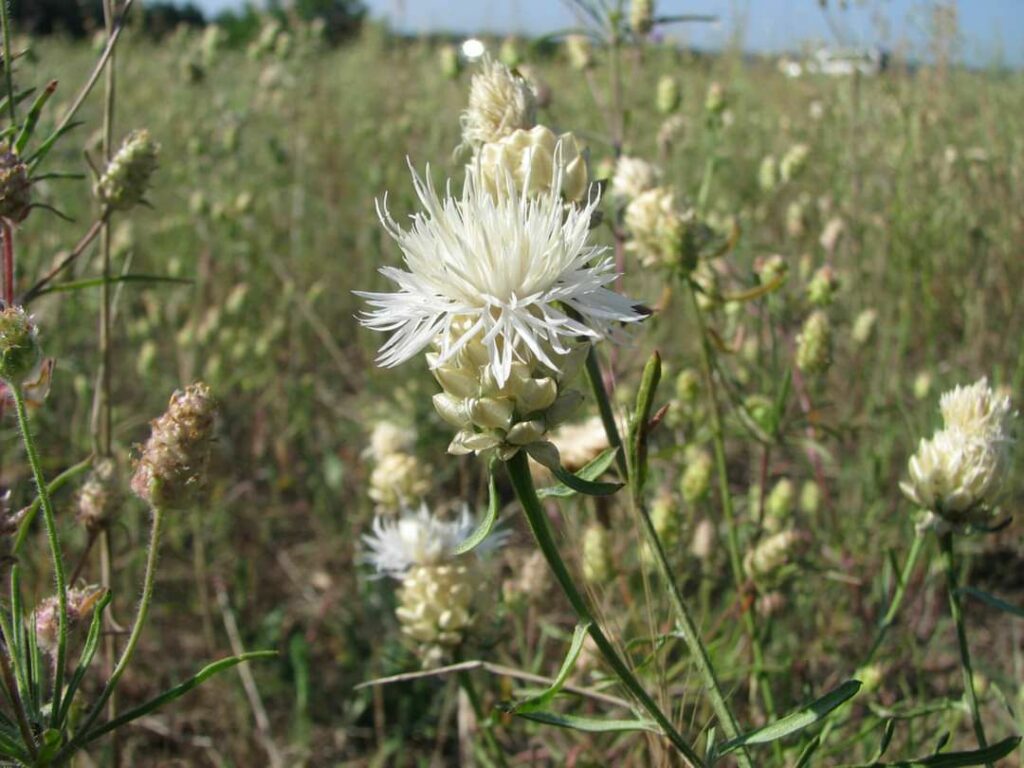
Centaurea protomargaritacea Klokov
Centaurea protomargaritacea Klokov has the largest population among other Lower Bug cornflower species. It grows within the Balabanivska and Halytsynivska sand arenas, which burned almost daily after the beginning of russia’s full-scale invasion due to shelling.
“The damage caused by emission of pollutants into the air because of fires on these lands that are part of the Mykolayiv Forestry State Enterprise, amounts to more than 700 million hryvnias,” Viktor Skorobohatov said.
Most of the fires occurred during the periods of flowering and fruiting of this cornflower species, which makes a stable existence of the species impossible, because cornflowers could not produce seeds in such unfavorable conditions.
Red Book Cornflowers of the Kinburn Peninsula
Hostile actions of russian troops caused the greatest damage to the National Park Biloberezhzhia Svyatoslava compared to other objects of the nature reserve fund of Ukraine. As of December 5, 2022, Kinburn Peninsula is temporarily occupied by Russian troops.
Oleksiy Vasyliuk, head of the NGO Ukrainian Nature Conservation Group, said that there are unique plants on the Kinburn Spit that grow only there and nowhere else on the planet, for example, two cornflower species – Сentaurea breviceps and Сentaurea Paczoskii.
“This territory was declared a national park for a reason. The Mykolayiv region is a special region where there are still unplowed steppes. The Kinburn Spit is one of the few places in Europe with virgin steppe areas, where rare steppe species grow. There is also the largest field of wild orchids in Europe there,” says ecologist Oleksiy Vasyliuk.
Currently, it is impossible to estimate the exact amount of damage to the natural ecosystems of the Kinburn Peninsula inflicted by the occupiers. It is dangerous to explore the damaged areas due to the presence of enemy troops.
Astragalus visuniacus
The only place in the world where the Astragalus visuniacus species grow is the Vysunsko-Inguletsky regional landscape park between the village of Bereznehuvate and the villages of Vysunsk and Pryshyb in the Bashtanka district of the Mykolayiv region. A large part of the park is located on the border between the Mykolayiv and Kherson regions.
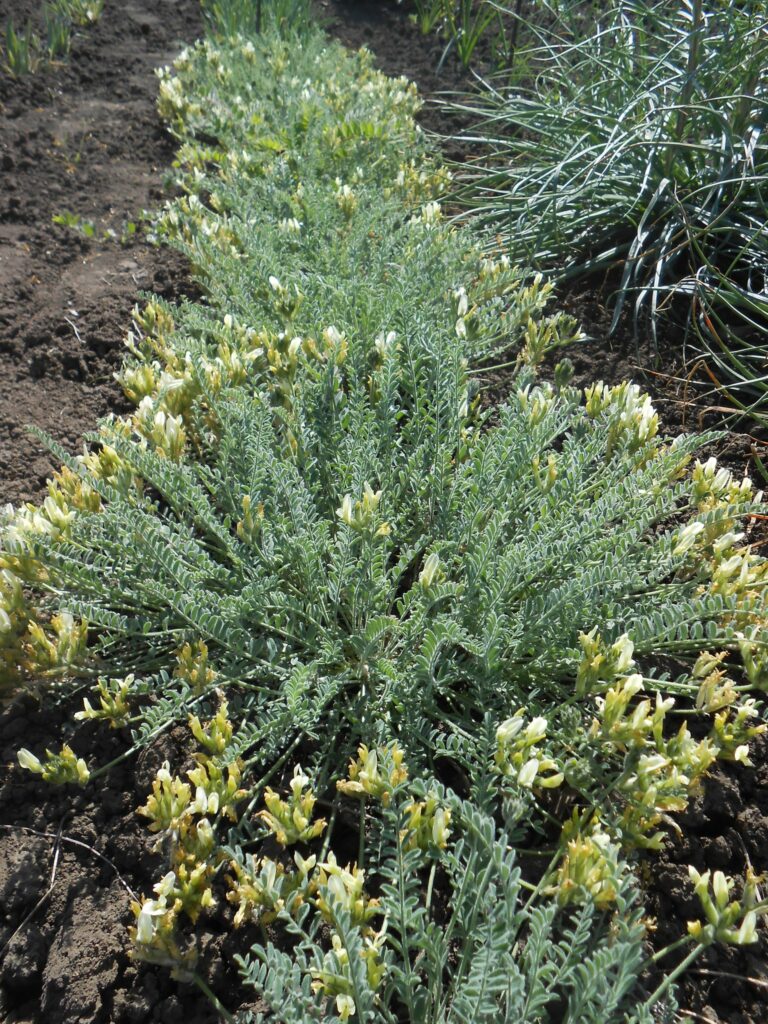
It will be possible to investigate the state of the Astragalus visuniacus population only after mine clearance of this area. The Ingulets sections of the park suffered the most from the russian military aggression, because they are nearest to the front line.
“There is very little information about the state of the Astragalus visuniacus population in particular, and about the state of the park in general. This is the only regional landscape park in the Mykolayiv region where no administration has been established. Since the beginning of the russian full-scale invasion, the park has been in the immediate combat zone. Russian troops passed through these lands. This area still suffers from enemy shelling. The consequences are fires, explosions, destruction, soil and water pollution,” Vladyslav Artamonov, the developer of the Vysunsko-Inguletsky regional landscape park project, said.
Experts will determine the environmental damage caused by the Russian full-scale invasion using special techniques. This calculation must be made for further recovery of reparations from the aggressor.
Cornflower is a flower symbol of the hero city of Mykolayiv
The loss of rare plants of the Northern Black Sea region is not only the loss of the unique gene pool of Life on Earth, it is the loss of a part of the Ukrainian identity, says Maryna Romanenko, the chief specialist at the department of ecology and natural resources of the Mykolayiv regional military administration.
“These cornflowers have become one of the unofficial plant symbols of Mykolayiv, because they are associated with our region. And we hope that in the future we will organize a campaign to choose a flower that will symbolize, among other things, the heroism and resistance of our city to russian aggression. In my opinion, it is the unique cornflower, fragile and at the same time resilient, that will win this competition,” Maryna Romanenko said.
The tradition of respectful attitude toward cornflowers is inherent in Ukrainian culture. For example, in order to draw attention to the necessity of preserving pristine nature for posterity at a time when more and more steppes were plowed up for the sake of increasing crops, poet Maksym Rylskyi wrote his poem “Letter to Cornflower” (1956).
Unique Ukrainian steppe flowers were embroidered for an exhibition in Poland
In the Polish city of Olsztyn, rare plants of the Northern Black Sea region, which are currently under the greatest threat of extinction due to the war, were embroidered on the tablecloth
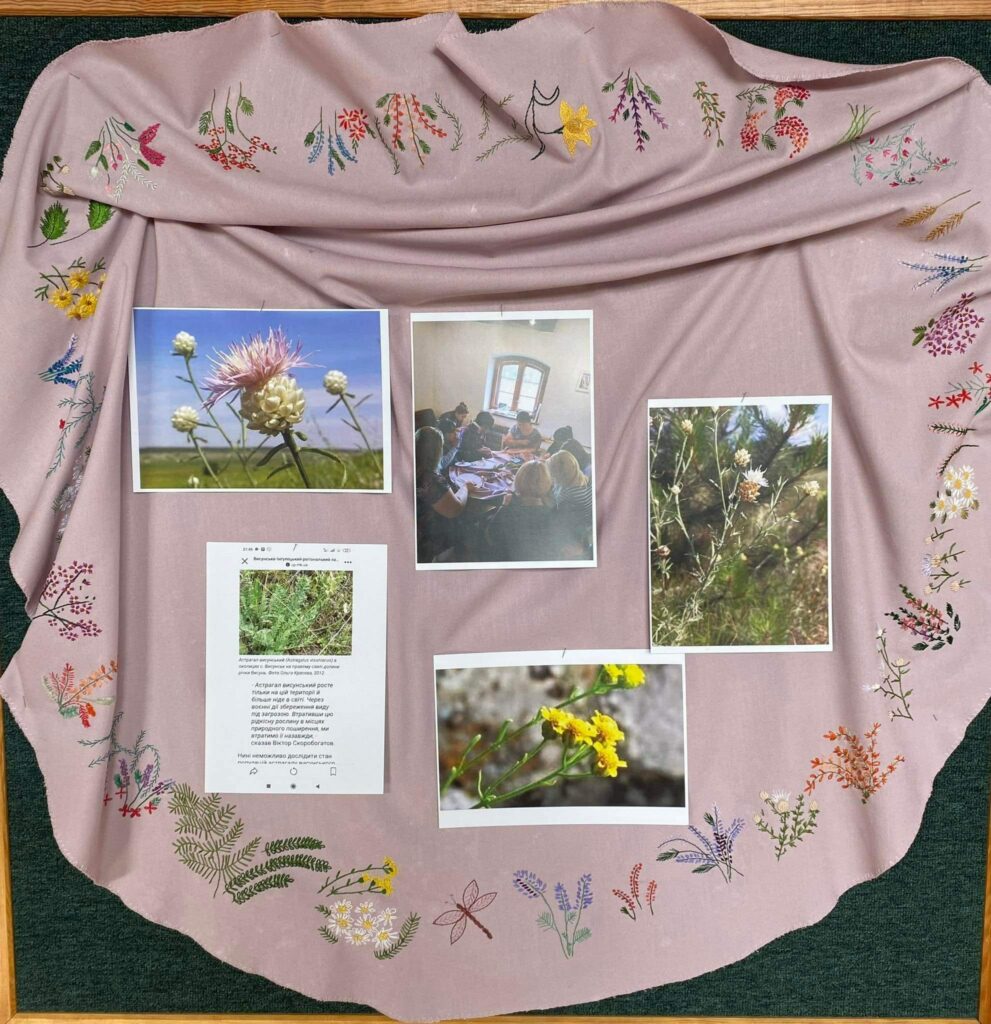
Embroiderer Tetiana Vedmediuk said that in Olsztyn, free embroidery master classes are held for Ukrainians under the Program of Integration of Ukrainian Refugees implemented by the Federation of Social Organizations (FOSA) of the Warmian-Masurian Voivodeship.
“During one of the classes, the participants talked about the regions they came from. And I learned that several unique plants in the Mykolayiv region are under the threat of extinction due to the war. That’s when the idea to embroider these plants for the exhibition appeared,” said Tetiana Vedmediuk.
20 embroiderers and their children from different regions of Ukraine and Poland took part in the project. The main goal of the campaign is to popularize the idea that russia’s armed aggression in Ukraine is mercilessly destroying the entire planet. Viktor Skorobohatov, an environmentalist from the Mykolayiv region, sent photos of the plants that had been embroidered.
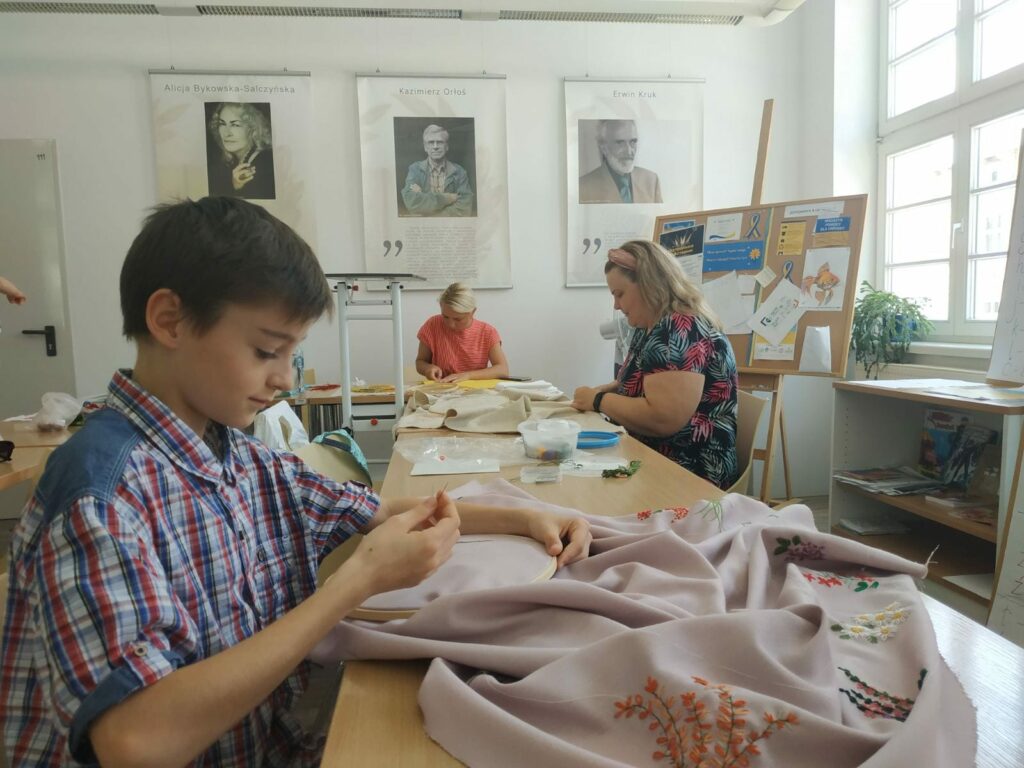
“We saw those plants for the first time in photographs. We didn’t know before how valuable they are for all Ukrainians and what enormous efforts environmentalists have made to preserve these flowers. During the exhibition, several people said after the war, they would go to Mykolayiv to see with their own eyes those amazing steppe cornflowers – a symbol of indomitability and hope,” said embroidery artist Tetiana Vedmediuk.
The tablecloth was presented at the exhibition of embroidered works at the Cathedral of the Intercession of the Theotokos in the city of Olsztyn, Warmian-Masurian Voivodeship.
Tetiana Bakotska
13.12.2022

